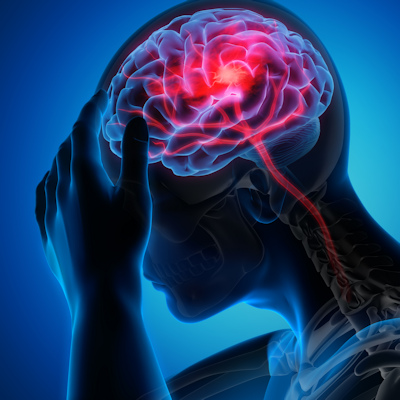August 1, 2022 -- University of Pittsburgh neurologists and immunologists have identified a subset of CD8+ regulatory-like T cells (CD8+TRLs) that provide fast-acting and lasting protection against ischemic stroke in mice, offering a potentially novel immunotherapy for stroke in humans.
Their study, published August 1 in the Journal of Clinical Investigation, is the first to demonstrate the function of CD8+ TRLs in mouse stroke models, and reports what they believe is a new subpopulation of CD8+CD122+ T cells, according to the authors.
"Our results suggest that the early infiltration of CD8+ TRLs naturally limits infarct expansion in the ischemic brain and that adoptive transfer of CD8+ TRLs offers a potentially novel immunotherapy for stroke," state the study's authors. "This study sheds further light on mechanisms underlying the reduction of acute ischemic brain injury by CD8+ TRLs and the resulting functional recovery, thereby improving our mechanistic understanding of immunomodulation of stroke outcomes and accelerating breakthroughs against an intractable brain disorder that has defied effective treatment."
According to researchers, CD8+TRLs enter the brain much faster than any other regulatory immune cells and serve as "first responders" to release molecules that provide direct neuroprotective effects, as well as limit inflammation and secondary brain damage. Furthermore, they may collaborate with other immune cells to safeguard the brain for a long time.
Within 24 hours after researchers depleted these CD8+TRLs from the bloodstream of stroke mice, the size of the brain region affected by ischemia expanded by 50% compared to that of animals whose CD8+TRL levels remained intact. In addition, mice in the study who received a transfusion of purified CD8+TRLs prepared in the lab fared better and recovered faster than those who were untreated for over five weeks.
"The beauty of CD8+TRLs is in their fast response. They confer very potent protection to the brain, which can last a long time," co-corresponding author Dr. Xiaoming Hu, PhD, associate professor of neurology at Pitt and a U.S. Department of Veterans Affairs (VA) investigator, said in a statement. "Most importantly, these cells are easily accessible because they circulate in the blood before they enter the injured brain."
Co-senior author Dr. Jun Chen, PhD, also a professor of neurology at Pitt and a VA investigator, noted that current therapy options for stroke patients are limited. While about 800,000 people in the United States have a stroke each year, only a quarter of those patients will be eligible to receive one of only two U.S. Food and Drug Administration-approved treatments.
"Creating shelf-stable and ready-to-use CD8+TRLs or developing a cocktail of neuroprotective signaling molecules released by those cells once they reach the brain could present effective future therapies against stroke and offer hope to hundreds of thousands of patients who are ineligible for treatments available to them currently," Chen said.
Copyright © 2022 scienceboard.net








